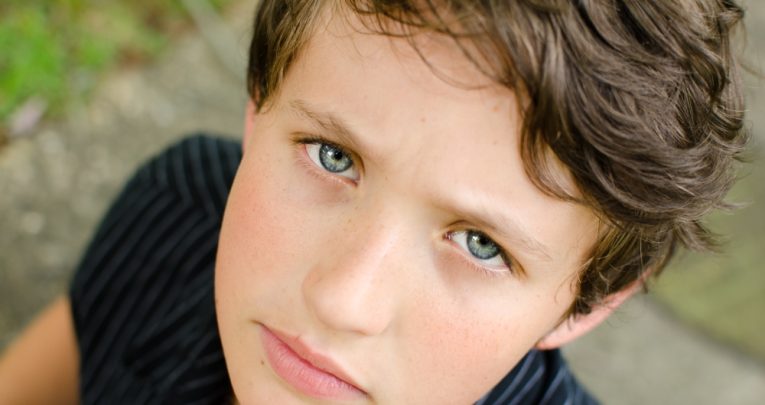School reopening – what teachers and leaders need to consider for children with SEND

Transitioning out of lockdown and back into daily school routines will be tough for everyone, but especially hard for children with SEND, says Karen Pilling…

I’m writing these words in my front room on a Tuesday afternoon at 2pm. Everything feels very strange. I find myself wondering if, by the time this article is published, some – perhaps even all of us – will be back at school in some form or other.
As a primary school SENCo, I’ve spent the partial school closures writing, rewriting, and rewriting again a series of SEND risk assessments and One Page Profiles, as well as recording data on CPOMS daily.
Although I’ve managed to complete a few SEN/EHC reviews virtually, I get a sinking feeling when I think about the huge amount of work that hasn’t been done this term – and when I’ve not been doing that, my thoughts have turned to what we all need to be thinking about when children eventually return to school.
Safety first
Firstly, and most obviously, is how we should keep children safe. Current restrictions mean that children will need to be kept 2m apart and regularly wash their hands. Anyone who has ever worked with SEND children – or indeed children of any age – will know that this is easier said than done. Smaller children’s dirty hands are almost magnet-like in their ability to make contact with members of staff (particularly if said staff are wearing white). Besides that, who among us could reliably stop ourselves from comforting a distressed child with a hug, or jumping in and grabbing them if they’re about to fall?
Children with certain conditions, such as ADHD or ASD, may find it almost impossible to not be close to others. Anyone who has worked with a child affected by pathological demand avoidance will know the joys of trying to get them to wash their hands when instructed.
The government’s guidance states that staff in specialist provision may need to relax the restrictions currently in effect at hospitals and GPs’ surgeries. I’d suggest that this will also need to be considered for children with certain types of SEND attending mainstream settings, but if they’re to be relaxed, how are we meant to ensure that all children and staff are able to remain safe? Does your setting have appropriate PPE available? Could we help the children better understand and follow the restrictions by utilising Social Stories, visual aids and so forth?
It’s also important to bear in mind that staff may be reticent to relax these restrictions. For a child with SEND that’s being supported by a member of staff wearing gloves and a mask, it will certainly add further distress if the staff member recoils every time the child comes near them!
The lockdown ‘hangover’
Which brings me to the huge effect this crisis will have on everyone’s wellbeing and mental health. As noted above, staff everywhere will be anxious at the idea of returning to work – especially if schools are open, but lockdown restrictions remain in place elsewhere.
Moreover, there will be many members of staff who have experienced traumatic events, bereavement and a host of other difficulties during lockdown, but haven’t had chance to work out how they’re going to deal with the resulting emotional impact in a work environment. The difficulty we face is that many staff will need to get used to being back in a ‘normal’ school environment amid a set of unprecedented personal and professional challenges, whilst at the same time being able to identify and support the mental health needs of the children in their care.
My social media feeds are currently full of memes about parents who have realised the difficulties of teaching for themselves, but the truth is that parents and carers will have found lockdown hard – a situation exacerbated for those families living in toxic environments, or who have experienced the recent death of relatives. As school staff, we need to be aware of how to support parents affected by a ‘lockdown hangover’.
24-7 stress
Parents of children with SEND will have had the additional stress of supporting children with a high level of need for 24 hours a day, seven days a week. Many won’t have been able to leave the house at all. It’s important that we talk to parents, find out how they’re coping and catch up on any important events that may have occurred during lockdown, so that we can point them in the right direction for any support they might need.
The partial closures have meant that many children with SEND will have been at home without their SEND needs being met. That’s not to suggest that this is due to some shortcoming on the part of their parents – but there’s only so much that a child can be taught at home by unqualified families.
We may see some children ‘shell-shocked’ by the process of returning to a school environment. Many will be overwhelmed. Just having to get up before 11am will be tricky for a lot of them. A large proportion of children at my school are Muslims, who will have been experiencing lockdown and practising Ramadan at the same time – a double-whammy in terms of unusual circumstances to get their heads around.
Unfortunately, there will also be many children living in toxic, chaotic and/or unhealthy environments which will likely have been made worse by the lockdown restrictions. This is particularly important to consider for children with SEMH needs, since the lockdown may well have increased the difficulties these children have to contend with.
Children with ASD and ADHD will meanwhile find the reversion to ‘normal’ school life extremely difficult to manage. Staff must be prepared in knowing what to look for when supporting the wellbeing of SEND children. Many will need to be gently eased back into school, while simultaneously trying to preserve familiar routines. I can hear the virtual grumblings of ‘easier said than done!’ from my sofa, but it’s worth considering what can be done pre-emptively to help with this. Productive conversations with class teachers, TAs and 1-to-1 staff meetings will be vitally important in the weeks ahead as we plan how to transition children effectively back into school.
Creative thinking
Depending on how and when schools re-open, staff will further need to consider the transition arrangements for children entering into their new classes, year groups and schools. Most children with SEND require additional support with this, and schools would normally have already started to prepare children for their upcoming moves in September.
There will obviously need to be some creative thinking around the best way of doing this under current conditions. There may not be much time left, but it’s vitally important that children are prepared as much as they can be.
The same applies to any staff who will be receiving a child with SEND. One Page Profiles, transition sheets and CPOMS records will all be really useful for these students’ new teachers, and can be passed on virtually before the end of the summer term, irrespective of whether schools are fully open by then or not.
Since the lockdown began we’ve all become Zoom, Microsoft Teams and Skype experts (albeit mainly due to boozy Saturday quizzes with friends, in my case), which allows transition meetings to be done virtually, if needed.
Back to ‘normal’
Children with SEND are likely to have found lockdown to be a traumatic experience, and an impending move to a new class or school could be overwhelming for them. I’ve previously experienced having a new child arrive in my class with no transition from their previous placement and a range of complex needs – trust me, the premature greying of my hair would have been far slower if I’d had some idea of what was needed to support their needs. It’s tempting to think ‘There’s no time left’ and ‘It’s not my problem any more’, but please spare a thought for the next poor soul…
The final consideration – and least important, I think, given current circumstances – is to remember that children’s progress will have been affected. Some children with SEND may have actually made accelerated progress due to having uninterrupted support at home, but others will definitely have regressed.
For some children with ASD/ADHD and SEMH, their needs may have made it impossible for them to learn at home, thus requiring an extended period before they’re able settle back into standard school routines. That’s yet one more area to consider among many, as we all cautiously advance towards getting back to ‘normal’…
Top 10 things to remember
1. The most important thing is that children are as safe as possible under the current circumstances.
2. Children’s wellbeing will inevitably have been affected by the lockdown, but not all will necessarily have been affected negatively.
3. As a nursery teacher once told me, when it comes to children settling into school, ‘The third day is always the worst…’
4. There have been a few subtle changes to EHC legislation. Keep an eye on whether these are upheld or if there are any further changes. 5. Be vigilant for any safeguarding disclosures following the lockdown – these may increase.
6. Do as much as you can pre-emptively to support transitions
7. Speak to parents and carers as often as possible.
8. Make sure that staff know the warning signs to look for among children and parents, and how to recognise when their colleagues may be struggling.
9. Remember how important routines are for some children with SEND.
10. Check in with your 1-to-1 staff to reassure and support, if needed. Karen Pilling is currently acting deputy head and SENCo at Chapel Street Primary School – a three-form entry primary school with a diverse cohort












